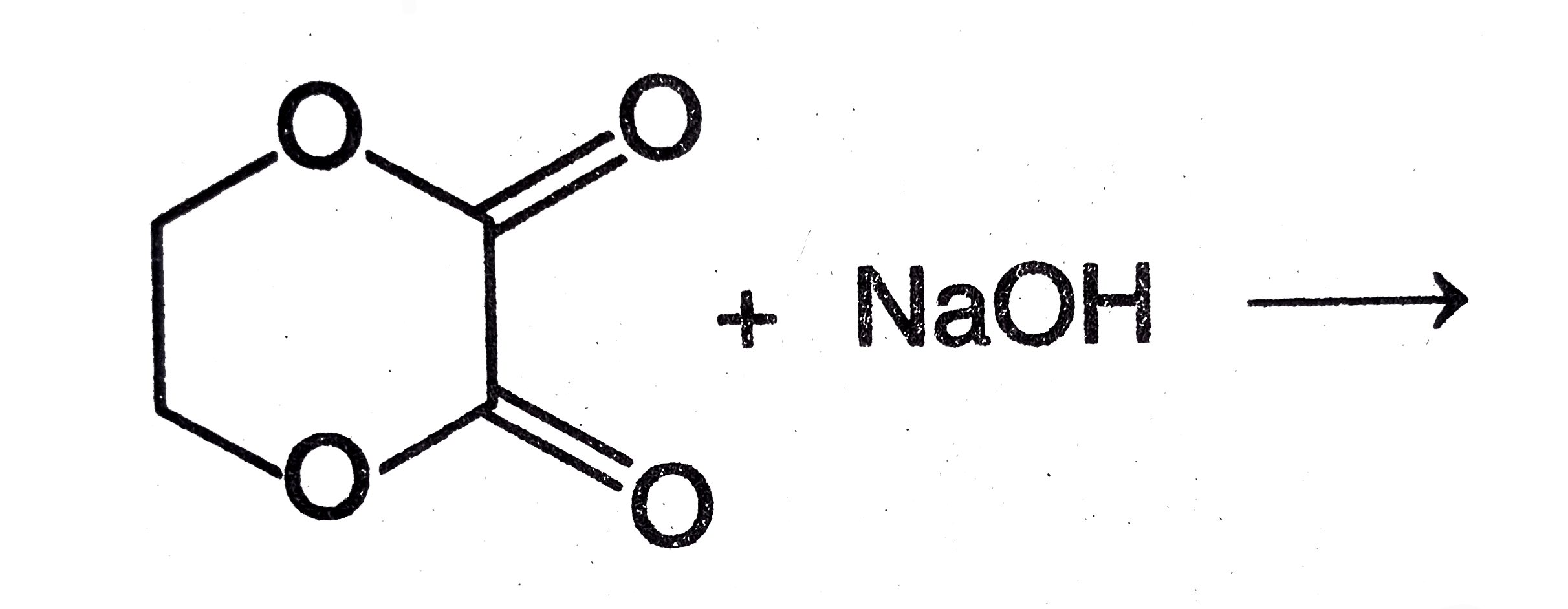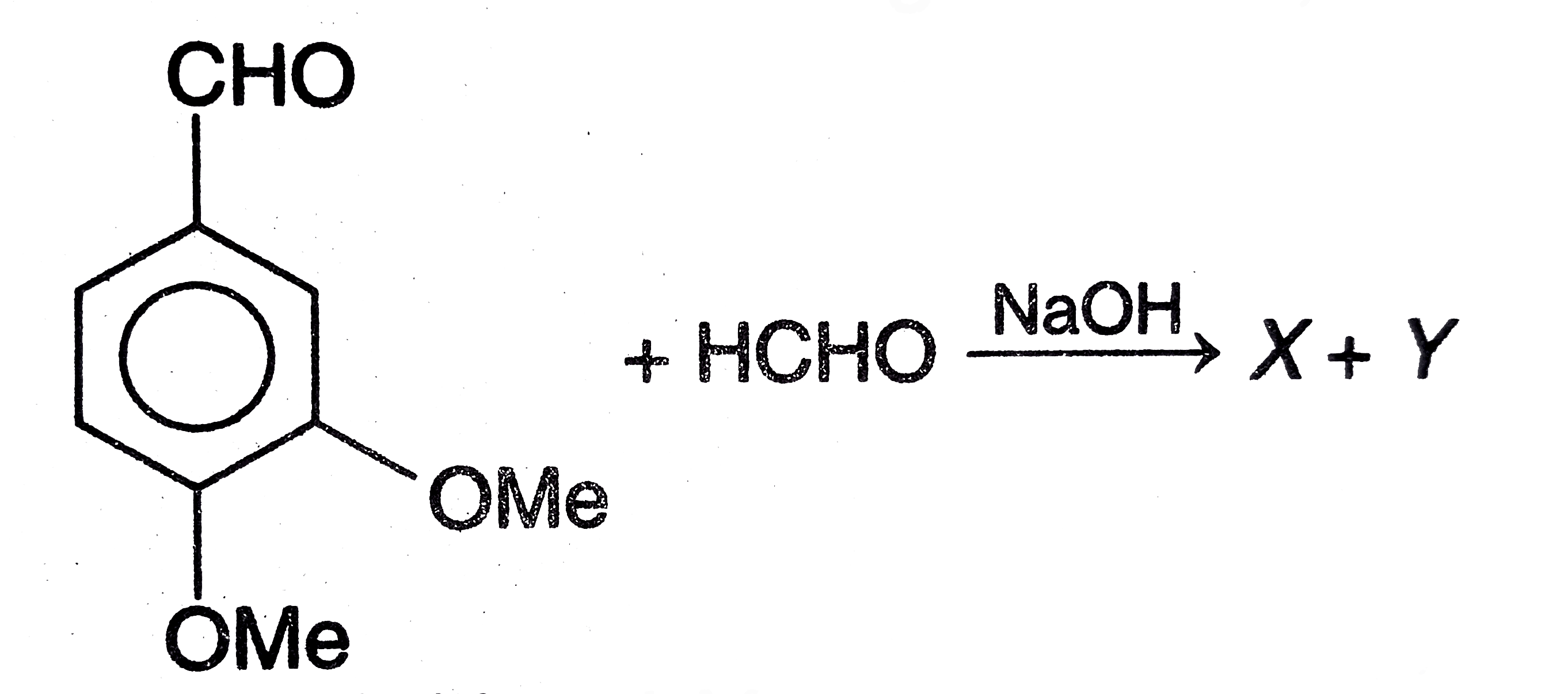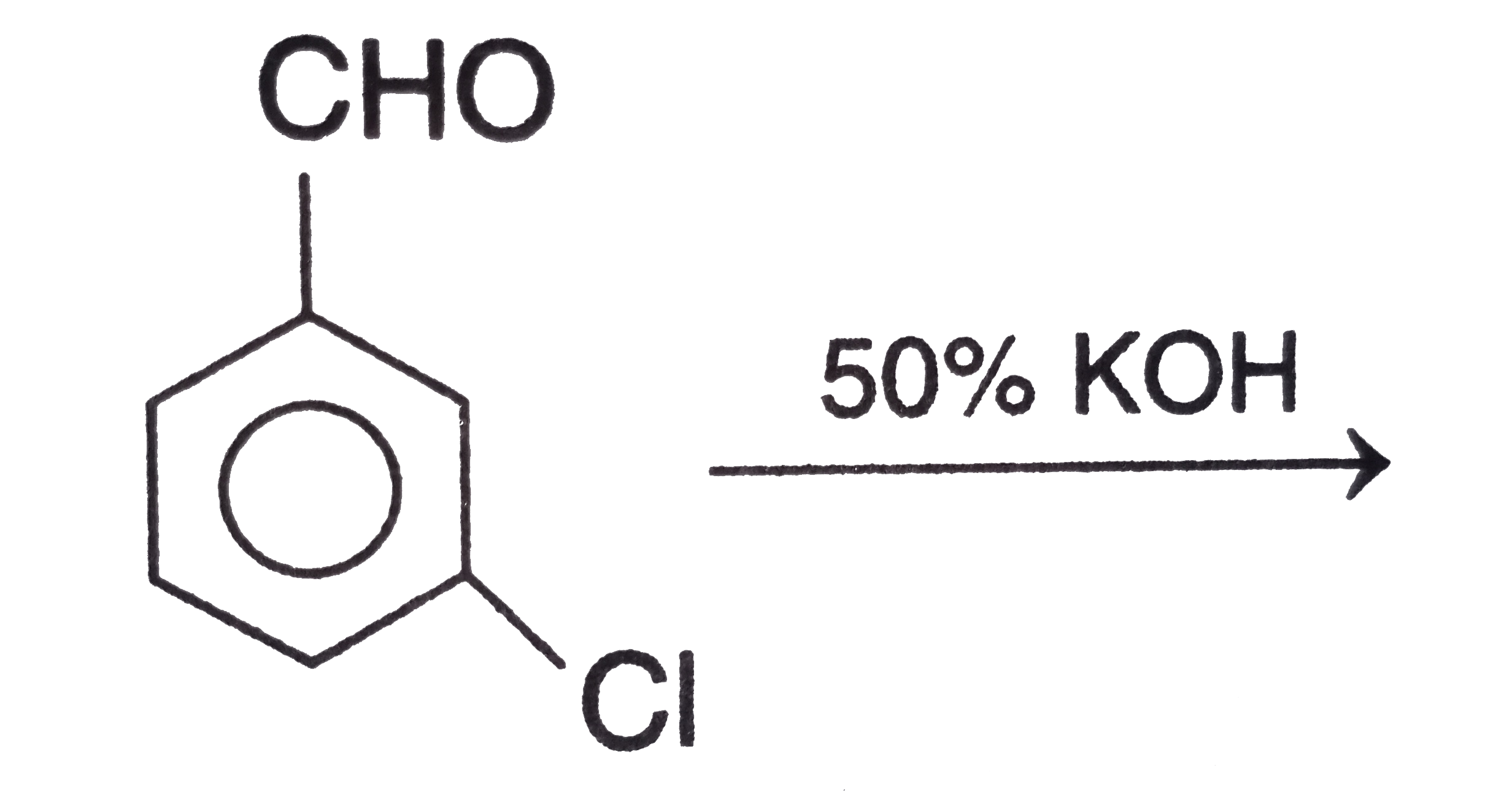Complete Solutions to EXERCISE 1 of chapter ALDEHYDES, KETONES AND CARBOXYLIC ACIDS of Class 12 book with complete answers and questions
| Class 12 | CHEMISTRY |
| Chapter | ALDEHYDES, KETONES AND CARBOXYLIC ACIDS |
| MHTCET PREP GUIDE | EXERCISE 1 |
| Number Of Questions | 100 |
| Academic Year | 2023-24 |
Which of the following givens an aldehyde on dry distillation ?
View SolutionCollin's reagent is used to convert
View Solutionwhich of the following on heating with aqueous KOH produces acetaldehyde?
View SolutionThe most suitable reagent for the conversoin of primary alcohol into aldehyde with the same number of carbon is
View SolutionStephen's redcution is used to prepare aldehyde from :
View SolutionWhich one of the following product is formed when calcium salt of adipic acid is heated ?
View Solution`A+H_(2)overset(Pd//BaSO_(4))to`
 A is
A is
View SolutionCalcium formate on distillation gives
View SolutionThe reagent used in Gattermann -Koch aldehyde synthesis is
View SolutionThe best reagent to convert pent-3-en-2-ol into pent-3-en-2-one is
View SolutionWhich of the following, compounds is the reactant in Rosenmund's reduction?
View SolutionWhen ethanal reacts with `PCl_(5)`, then product formed is
View SolutionName the reagent used to bring about the following transformation, but-2-ene to ethanol:
View SolutionWhich of the following yield 2 moles of formaldehyde on ozonolysis ?
View SolutionAcetophenone cannot be prepared easily starting from
View Solution`CH_(3)COCl+H_(2)underset("Quinoline")overset(Pd//BaSO_(4))rarr`
View SolutionWhich of the following is process used for the preparation of acetone?
View SolutionEthyne `+H_(2)Ounderset(H_(2)SO_(4))overset(HgSO_(4))to` Product formed in the given reaction is
View SolutionMatch the following names of reagents given in Column II to bring about the conversions given in Column I and choose the correct option from the codes given below.

View Solution`Ph-Cequiv C-CH_(3)overset(Hg^(2+)//H^(+))toA`, A is
View SolutionSilver Miror test is given by which one of the following compounds?
View SolutionThe reagent with both acetaldehyde and acetone react is
View SolutionReaction of formadehyde and ammonia gives
View SolutionWhich of the following reactions convert acetone into hydrocarbon having same number of carbon atoms?
View Solution`CH_(3)CHO+HCHOoverset("dil. NaOH")underset("Heat")rarrAoverset("HCN)underset(H_(3)O^(+))rarrB`
the structure of compound B is
View SolutionIn a reaction RCHO is reduced to `RCH_(3)` usig amalgamated zinc and cencentrated HCl and warming the solution. The reaction is known as
View SolutionCannizaro reaction is preformed by
View SolutionAn organic compound 'X' is oxidised by using acidified `K_(2)Cr_(2)O_(7)`. The product obtained reacts with phenyl hydrazine but does not answer silver mirror test. The possible structure of 'X' is `:`
View SolutionWhich product is obtained on reduction of methanal in the presence of concentrated NaOH?
View SolutionA compound 'X' undergoes reduction with `LiAlH_(4)` to yield 'Y'. When vapours of 'Y' are passed over freshly reduced copper at `300^(@)C`, 'X' is formed. What is 'Y' ?
View SolutionPredict the product for the reaction below :

View SolutionThe product obtained in the following reaction is:

View SolutionAldehyde with `NH_(2)NH_(2)` forms
View SolutionThe end product C in the following sequence of chemical reactions is
`CH_(3)COOHoverset(CaCO_(3))to A overset("Heat")toB overset(NH_(2)OH)toC`
View SolutionThe reagent used in Clemmensen's reduction is
View SolutionThe reaction of an aldehyde with hydroxylamine gives a product which is called
View SolutionA and B in the following reaction are
`R-underset(O)underset(||)C-Runderset(KCN)overset(HCN)toAoverset(B)to`

View SolutionConsider the following reaction,

View SolutionAldol condensation is given by
View SolutionWhich of the following compound does not react with Fehling's solution?
View SolutionOn reaction with hydroxylamine, aldehydes produce:
View SolutionThe enol form of acetone after treatment with `D_(2)O` gives:
View SolutionWhen acetaldehyde is heateed with Fehling's solution, it gives a red precipitate of :
View SolutionBenedict's solution is not reduced by
View SolutionBenzaldehyde on refluxing with aqueous alc. KCN produce
View SolutionAcetaldehyde and acetone can be distinguished by
View SolutionWhich of the following does not undergo Cannizzaro's reaction ?
View SolutionIdentify the organic compound which on heating with strong solution of NaOH, partially converted into an acid salt and partially into alcohol.
View SolutionWhich of the following is an acetaldoxime?
View SolutionWhich of the following reagents can form a hydrazone with alkanone?
View Solution`CH_(3)CHOoverset(HCN)rarr(A) overset(HOH)rarr(B)`
The product (B) is :
View Solution`Aoverset(HCl)to(CH_(3))_(2)C=CHOCH_(3),A` is
View SolutionWhich of the following does not react with `NaHSO_(3)?`
View SolutionFehling solution is
View Solution`OHC-CHOoverset(OH^(-))toHOH_(2)C-COOH`. The reaction given is
View SolutionConversion of benzaldehyde to 3-phenylprop-2-en-1-oic aicd is
View SolutionThe reaction of acetaldehyde with Tollen's reagent gives
View SolutionBenzyl alcohol can be prepared from benzaldehyde by
View SolutionWhen benzaldehyde reacts with acetophenone in the presence of sodium hydroxide, then product is
View SolutionThe hydrolysis product of `CH_(3)COOH_(3)+CH_(3)MgBr` is
View SolutionThe major organic product formed from the following reaction is

View SolutionAldehydes are the first oxidation product of :
View SolutionThe product of this reaction is

View Solution`C_3H_6O` did not give a silver mirror with Tollen's reagent, but gave an oxime with hydroxylamine. It can gove positive
View SolutionTo distinguish between 2-pentanone and 3-pentanone which reagent can be used ?
View SolutionThe aldol condensation of `CH_(3)-CHO` results is the formation of
View SolutionWhich does not react with Fehling's solution?
View SolutionAectaldehyde reacts with chlorine to give
View SolutionAcetylene and HCHO react in presence of copper acetylide catalyst to form:
View Solution`C_(6)H_(5)-CH=CHCHO overset((X))rarr C_(6)H_(5)CH=CH_(2)OH`
In the above sequence (X) can be:
View SolutionIdentify X and Y in the following sequence of reactions respectively:
`CH_(3)CHOoverset(HNO_(3))toXunderset(Delta)overset(P_(4)O_(10))toY`
View SolutionThe reagent that gives an orange coloured precipitate with acetaldehyde is
View SolutionAcetaldehyde cannot exhibit
View SolutionThe compound which reacts with hydroxylamine but does not react with Tollen's reagent is
View SolutionArrange the following compounds in the increasing order of nucleophillic addition reaction:
I. `HCHO`
II. `CH_(3)COCH_(3)`
III. `C_(6)H_(5)COCH_(3)`
IV. `C_(6)H_(5)COC_(6)H_(5)`
View SolutionThe compound that gives both iodoform and Fehlings test is :
View SolutionIf formaldehyde and `KOH` are heated, then we get
View SolutionAmong H-`CHO,CH_(3)CHOandC_(6)H_(5)CHO` which will undergo Cannizaro's reaction?
View SolutionHCHO was treated with a reagent X. The product formed upon hydrolysis in the presence of an acid gave `C_(2)H_(5)OH`. The reagent X is
View SolutionWhich one is most reactive towards nucleophilic addition reaction?
View SolutionIn the following reaction the product E is
`underset(CHO)underset(|)(CHO)underset((ii)H^(+))overset((i)NaOH)toE`
View SolutionWhich of the follwing compound does not react with concentrated alkali to give corresponding alcohol and salt of carboxylic acid ?
View SolutionAt higher temperature, iodoform reaction is given by the dilute solution of
View SolutionPredict the product in the given reaction,

View SolutionSelf condensation of acetaldehyde in the presence of dilute alkalies gives
View SolutionKetones react with Mg-Hg over water gives
View SolutionThe reagent used for the separation of acetaldehyde from acetophenone is
View SolutionCross aldol condensation occurs between
View SolutionIn the reaction
`C_(6)H_(5)CHO+(CH_(3)CO)_(2)Ooverset(CH_(3)COONa)rarrA`. Product A is
View SolutionThe order of reactivity of phenyl magnesium bromide with the following compounds is

View SolutionIn the presence of dry HCl gas, `CH_(3)CHO` condenses with `C_(2)H_(5)OH` to give
View SolutionBoth `HCHO` and `CH_(3)CHO` give simila reactions with all the reagents except
View SolutionThe reagent which does not react with both acetone and benzaldehyde is
View SolutionThe compound that neither forms semicarbazone nor oxime is
View SolutionWhich of the following conversion can be carried out by Clemmensen reduction ?
View SolutionThe methanol, ethanal and propanone are miscible with water because they form
View SolutionWhich of the following statements are correct for aldehydes and ketones?
View SolutionStudy the mechanism given below carefully,

Select the correct statement(s) for the above diagram from the options given below.
View Solution
Z=Alkyl, aryl, OH, `NH_(2),C_(6)H_(5)NH,NHCONH_(2)`,
Which of the following statement(s) is/are true about the above given reaction?
View SolutionWhich reaction is suitable for the preparation of `alpha`-chloroacetic acid?
View Solution
EXERCISE 1 questions and complete solutions for chapter ALDEHYDES, KETONES AND CARBOXYLIC ACIDS of MHTCET PREVIOUS YEAR PAPERS AND PRACTICE PAPERS of Class 12